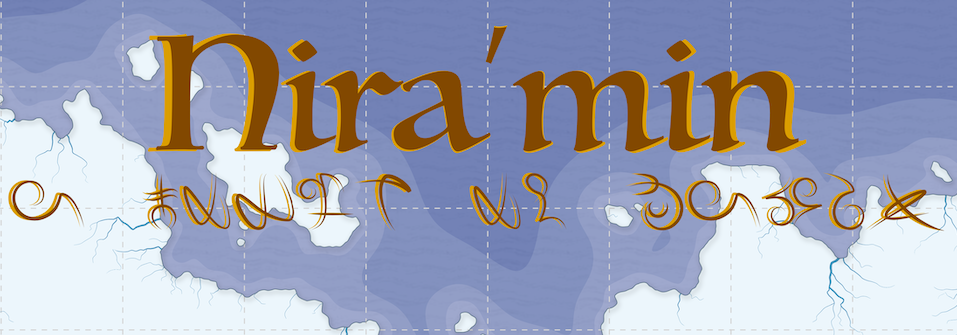Hirona
Domesticated hirona are amongst the best mounts for nomads. They are strong animals, and their herding instinct will lead them to protect their tribe from raiders, bandits, and predators.
Basic Information
Anatomy
Looking like a strange cross between a cow, rhinoceros, and triceratops, hirona have heavyset bodies covered in a short coating of fur. On the back of their head is a bony frill extending past the neck and a pair of horns extending to the sides of the face from just above the eyes, which are positioned on either side of the head. Their short tail acts as a counterbalance to the weight of the body. The mouth is a beak similar to that of some herbivorous dinosaurs such as triceratops and stegosaurus, and is used to graze on low-growing vegetation such as grasses, ferns, and other herbaceous plants.
Genetics and Reproduction
Despite sharing features with the reptilian triceratops, hirona are mammals. Breeding occurs in the spring, with bull hirona fighting over a female. Pregnancy lasts for 4-6 weeks, and usually results in one calf. After giving birth, a female hirona may not reproduce again for another two and a half years, so competition for a mate is fierce amongst males.
Growth Rate & Stages
Hirona calves are born able to see and walk, a trait that is essential for life on the move. They drink their mothers milk for the first 8 weeks of their life, after which they begin to eat grasses and other foliage. At 7 months the calves are independent from the adults, although they will remain close to their mothers. 1 year of age marks the age where hirona are old enough to reproduce themselves.
Ecology and Habitats
Hirona live in the grasslands of the west, and are used by nomadic tribes of humanoids as pack animals, mounts, food, and defense. They are not often found in forested areas, as they are unable to move as well in between the trees.
Dietary Needs and Habits
Hirona are grazers, feeding on the various grasses and foliage of the grasslands that they live in.
Biological Cycle
Hirona tend to migrate in a North-South pattern, following the seasons. They tend to arrive in an area when the weather gets warmer and leave when it gets colder, although in parts of the world that receive stable temperatures year-round they may not migrate as much.
Additional Information
Perception and Sensory Capabilities
Hirona have excellent vision, with the placement of their eyes giving them 360º vision. Although hirona do have a sense of smell, it is not very strong, only allowing them to smell up to 3 miles. As purely mundane creatures, hirona do not have any innate magic and do not have any extrasensory abilities.
Scientific Name
Dacia sarcina
Lifespan
75 years
Conservation Status
Hirona are a domestic species, and not in danger of going extinct. Wild populations are also numerous, although not as much as domesticated hirona.
Remove these ads. Join the Worldbuilders Guild



Comments